8 The Lens
- What is a lens
- How a lens works
- Aperture and f stops
- Different types of lenses
- Manual Focus (MF)
- Auto Focus (AF)
WHAT is a camera lens?
A camera lens is an optical system made up of a set of shaped pieces of glass set inside a cylindrical metal or plastic housing.
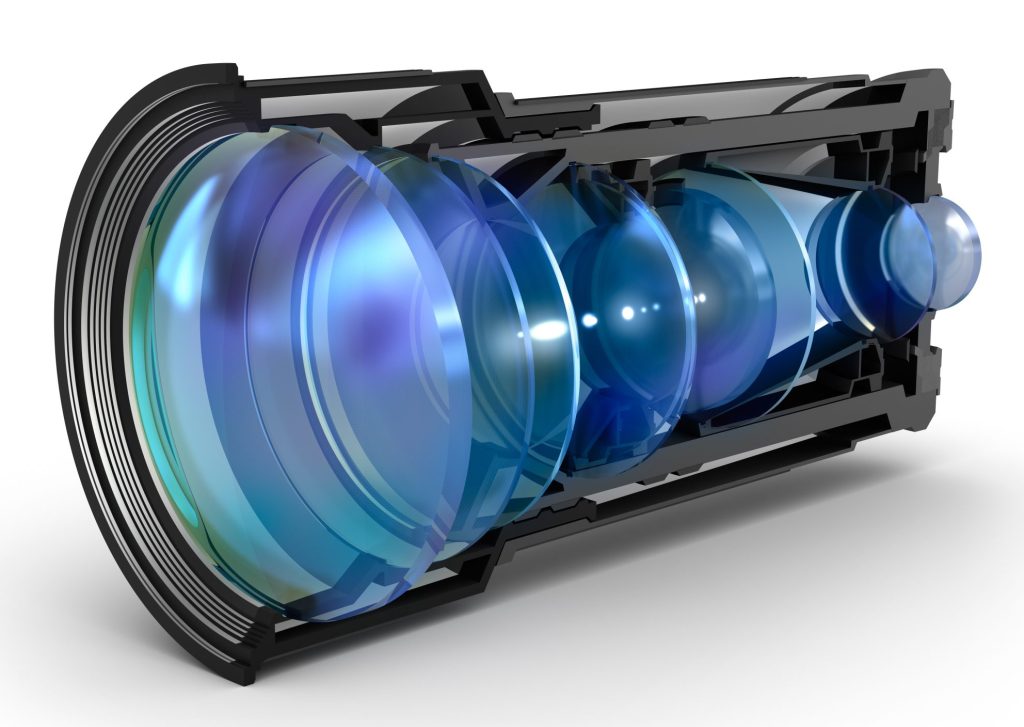
On a 35mm SLR camera, the lens attaches to the front of the body of the camera and is interchangeable. This means that there are many different lenses that one could attach to the camera body, depending on what effect is desired in the photograph. Depending on the kind of lens you use, your images will look different.
How a lens works
A lens works just like your eye’s iris (diaphragm) and pupil (aperture).
It allows light to enter and it controls how much light will reach the film to form an image.
The different aperture settings or openings are easy to change to the desired size by turning the aperture ring on the lens.
A number of overlapping blades (diaphragm) move together mechanically and form the desired aperture.
The different aperture sizes are called F stops.
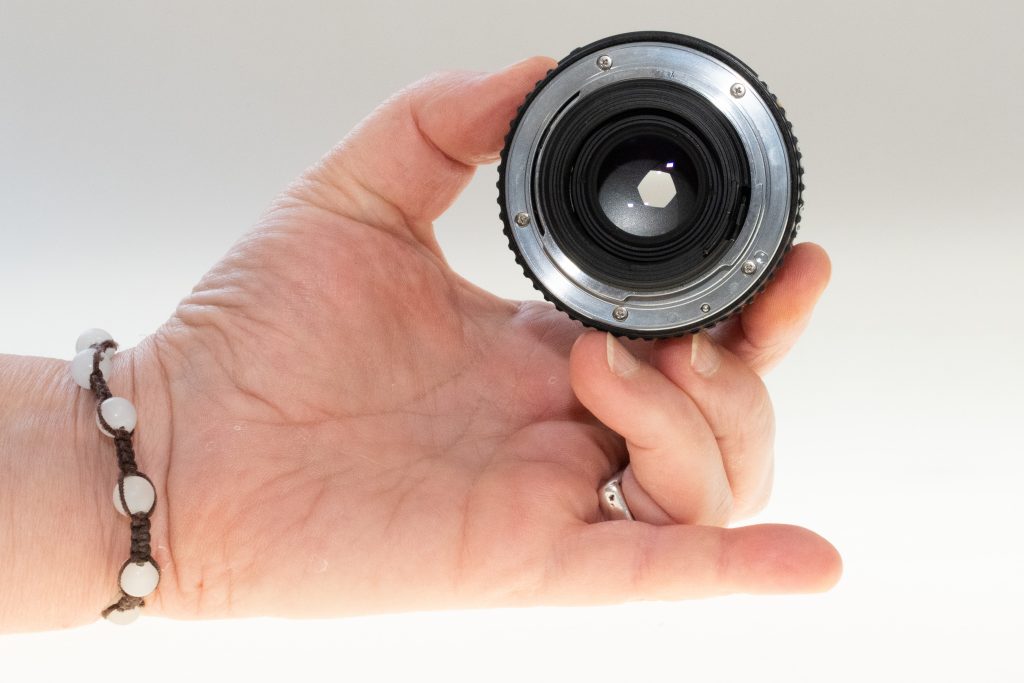
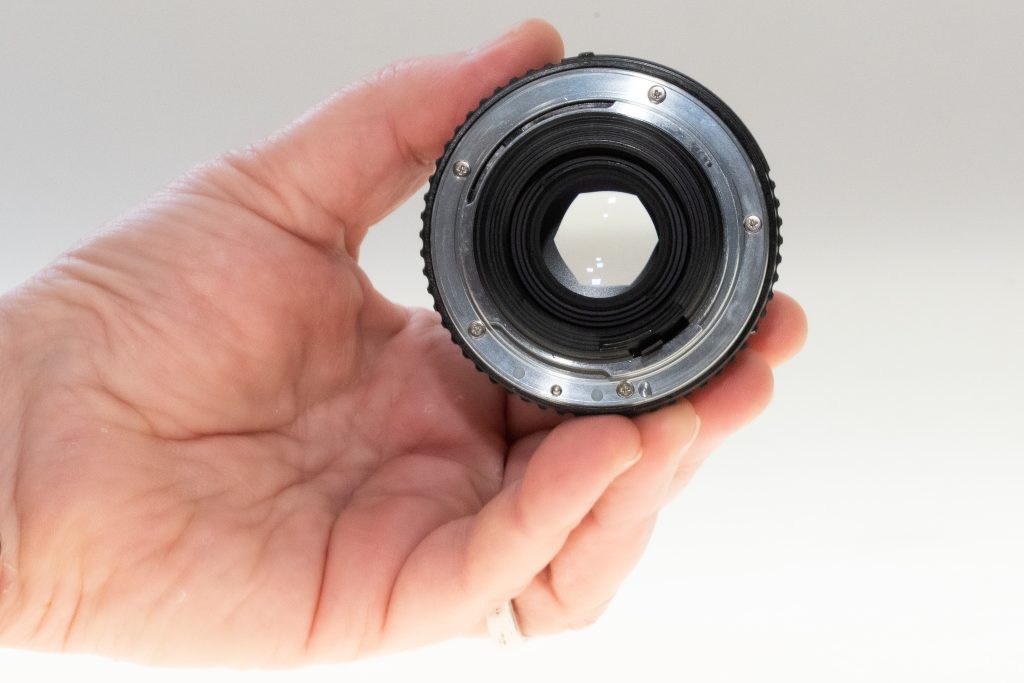
What does the lens control
- The amount of light entering the camera through the aperture hole
- The image area (determines the angle of view of the scene from wide-angle to telephoto)
- Focuses the image onto the film
- Controls the Depth of Field
-
The lens controls the amount of light entering the camera.
The lens allows light to enter the camera through an opening and projects a sharp and undistorted image onto the film.

The lens opening is also called aperture The size of the opening is controlled by a diaphragm. A diaphragm is a set of overlapping blades that adjust to form the desired opening or aperture. The different aperture sizes are called f stops. Each f stop is a unit of light.
- The lens controls the image area or angle of view
The lens controls what the camera is able to record on the film or what the camera is able to see. The image area the lens sees depends on the focal length of the lens.
Focal length is the distance from the center of the lens, when focused on infinity, to the film plane or the area where the film rests in front the shutter curtain. The shorter the focal length the wider the angle of view and the longer the focal length the narrower the angle of view.
Below is an illustration of four typical prime lenses used with 35mm SLR cameras. Each photograph was taken from the same spot with the same camera. The only variable is the lens used, from a 35mm wide-angle or “short” lens to a telephoto or “long lens”.
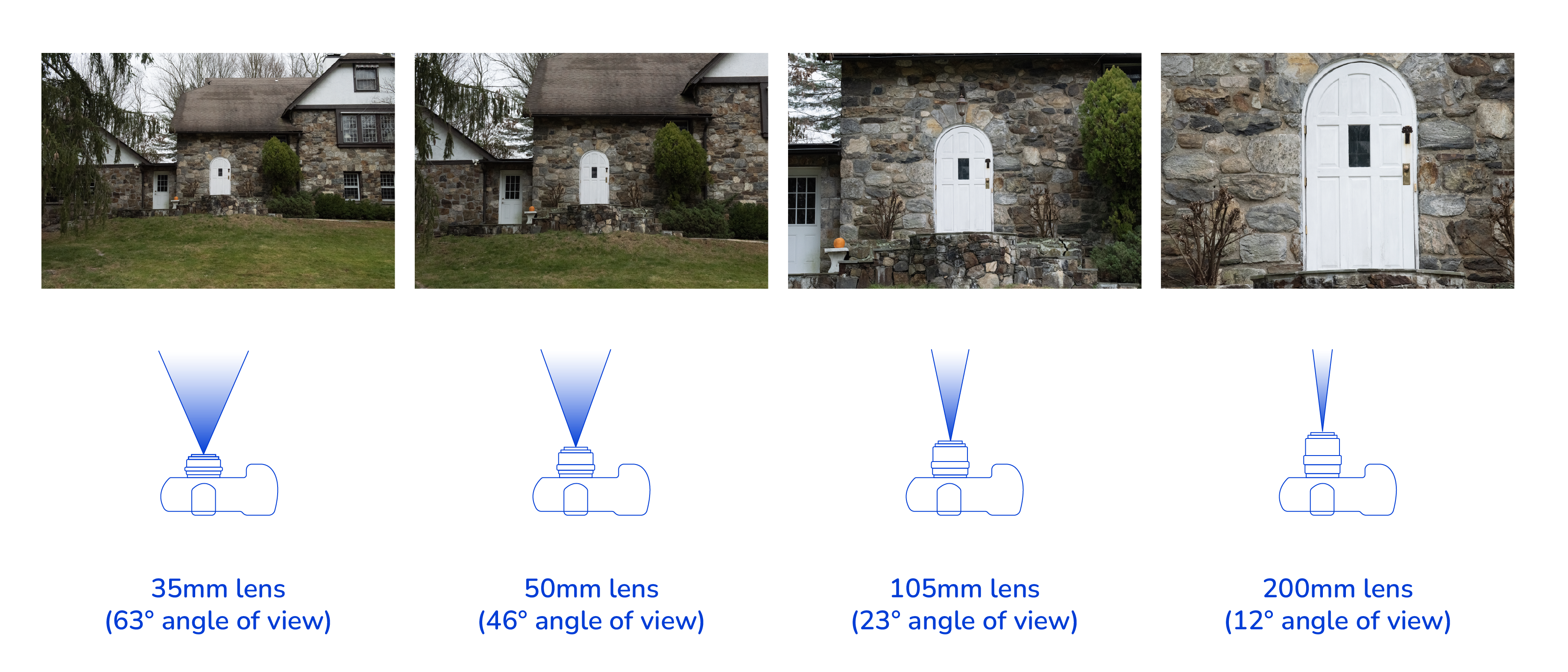
-
The lens focuses the image onto the film
By turning the lens focusing ring on the barrel of the lens, the glass elements move, and focus the image on the film plane.
Looking through the viewfinder while turning the focusing ring you are able to see if the subject you are photographing is sharp.
There are different focusing systems for different cameras. Please check the instructional manual of your camera.
-
The lens aperture controls the Depth of Field.
Depth of Field (DoF) refers to the distance between the closest and farthest objects that appears acceptably sharp in a photograph.
When you focus your lens on a subject (the leaves in our example) the depth of field will change depending on the f-stop you are using.
The larger the aperture (small f stop number) the less the Depth of Field. Only the water spout is sharp when using f 2.8 and the background appears blurred/out of focus.
The smaller the aperture (large f-stop number) the larger the Depth of Field. The water spout and the background are sharp when using f 16.
The chart below describes the changes to DoF when using different apertures (F Stops)
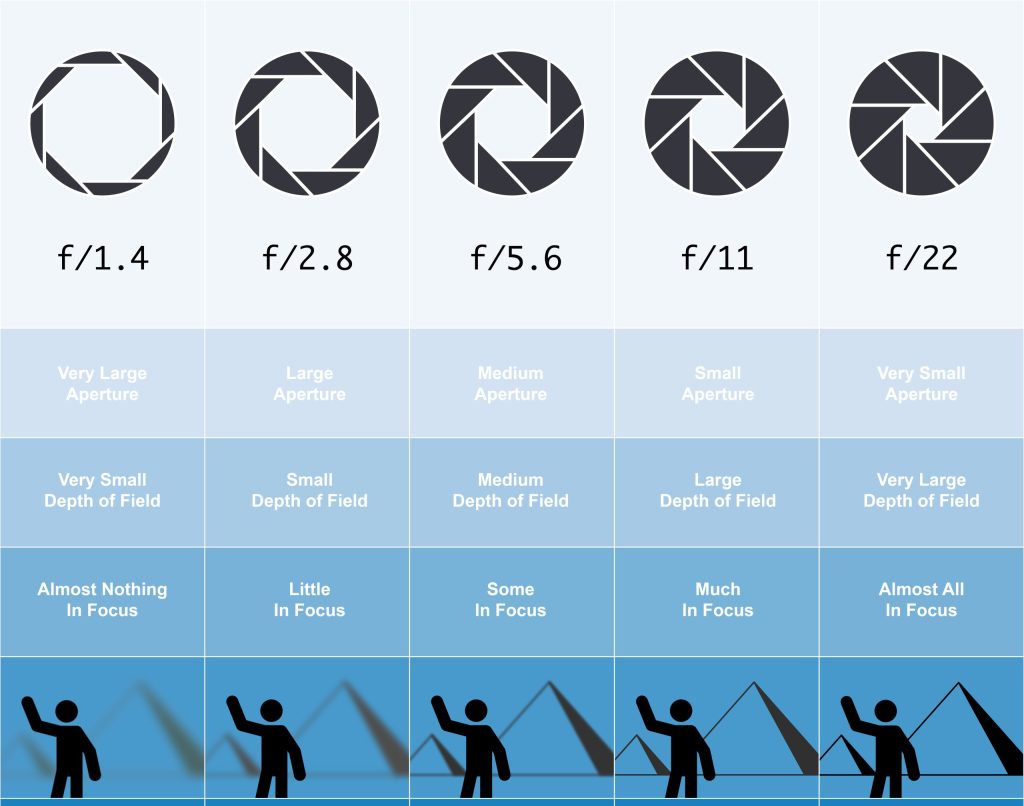
ACTIVITY
See the chapter on Depth of field to explore all factors affecting the DoF
Types of lenses
- Prime lens which is also known as fixed-focal-length lenses
- Normal lens (a 50mm lens is considered a normal lens for a 35mm SLR camera)
- Wide angle lens 24mm or 35mm
- Telephoto 135mm or 200mm etc
- Macro lens is a specially made lens that allows you to focus much closer than any other lens. Perfect for close-up photography.
- Fast or slow lenses. A fast lens is a lens that has a large aperture setting such as f 1.4, f2, and f2.8. (the more light that enters through the lens, the faster the shutter speed can be, which is why it’s called a fast lens.) Faster lenses need more high-quality glass making them more expensive than slower lenses.
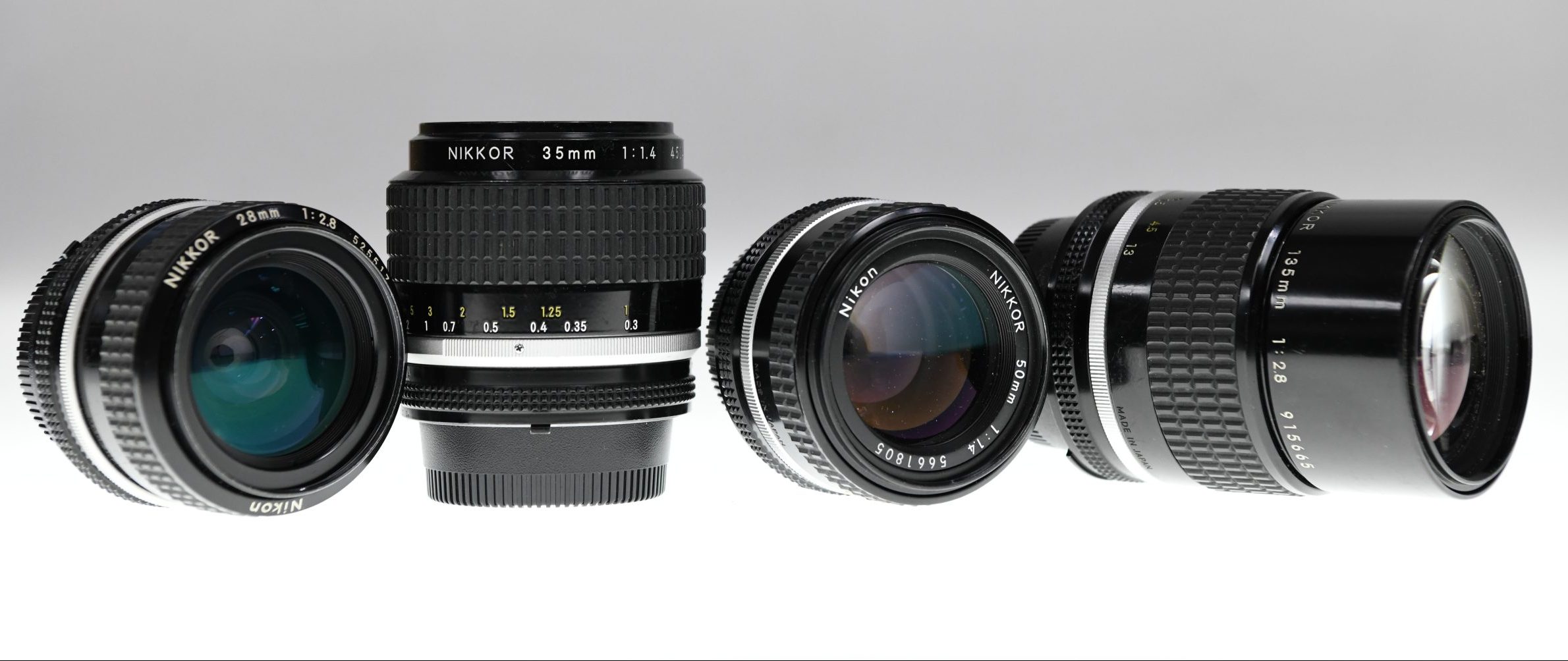
- Zoom or variable focal length lenses. A zoom lens incorporates a range of lenses in one lens. It is a lens with multiple focal lengths. Inexpensive Zoom lenses tend to be slower and inferior in quality than prime lenses. Fast zoom lenses are high quality and very expensive.
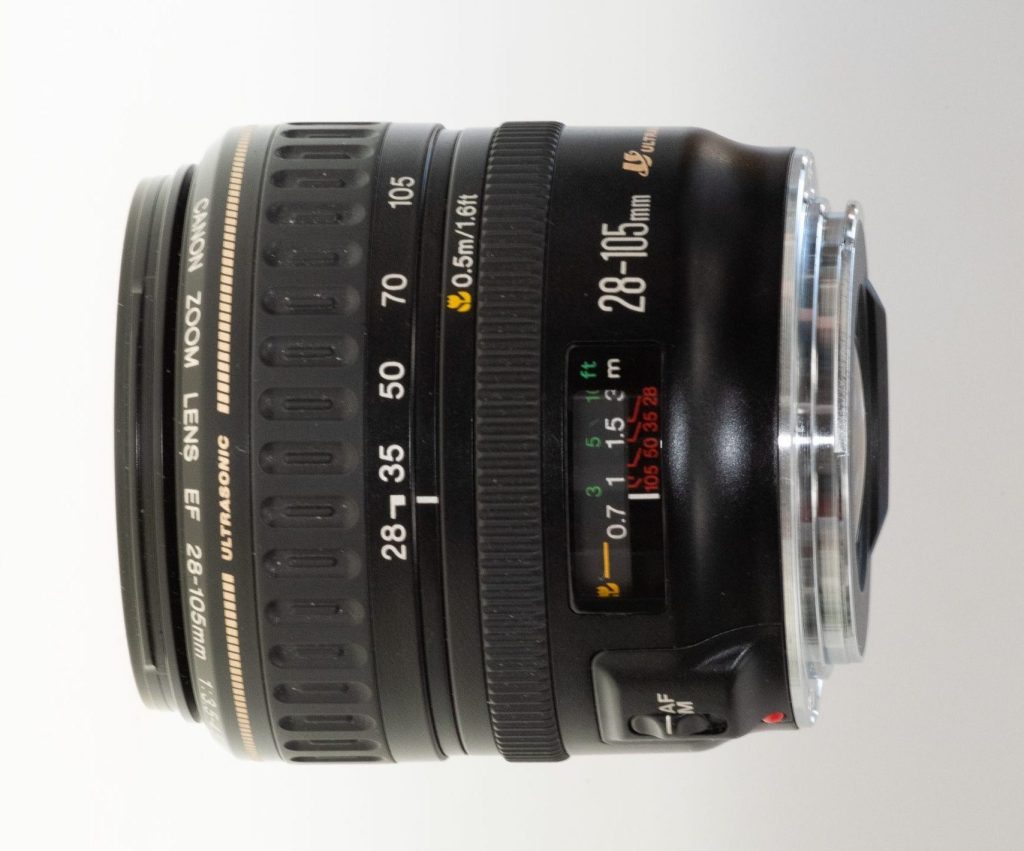
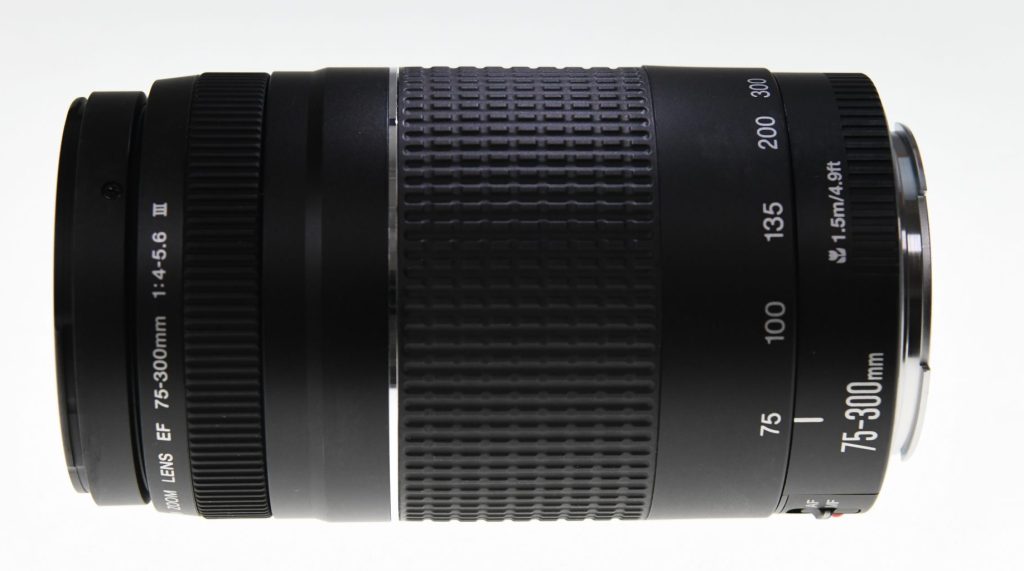
Only a macro lens allows you to photograph closer than 2 feet. Do not try to get closer than 2 feet with your regular lenses. The picture will be blurry even if it looks sharp through your viewfinder.
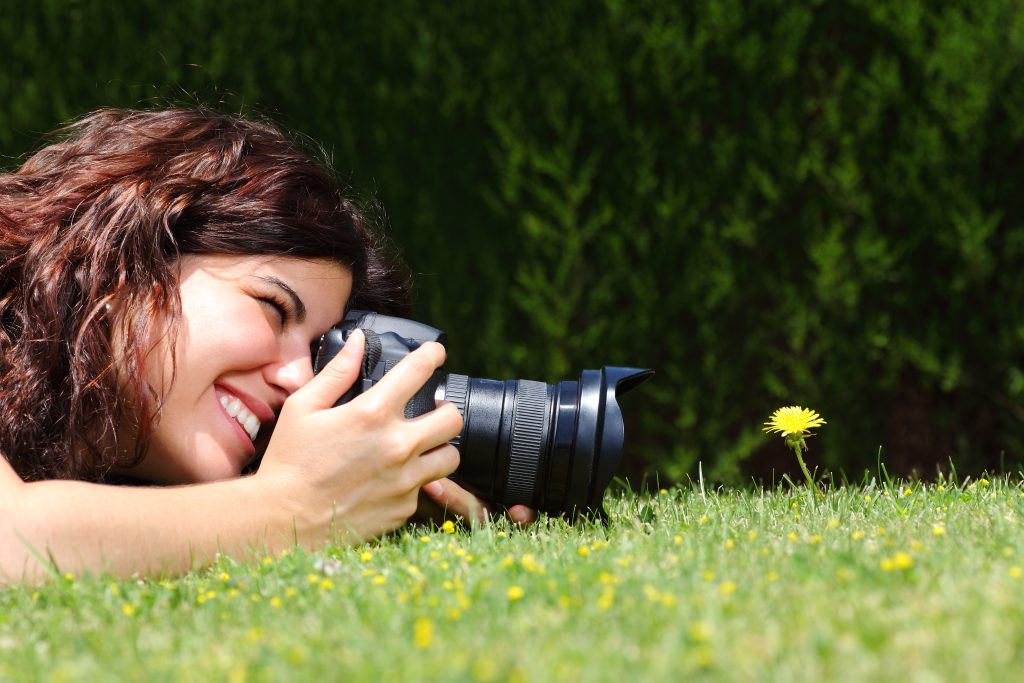
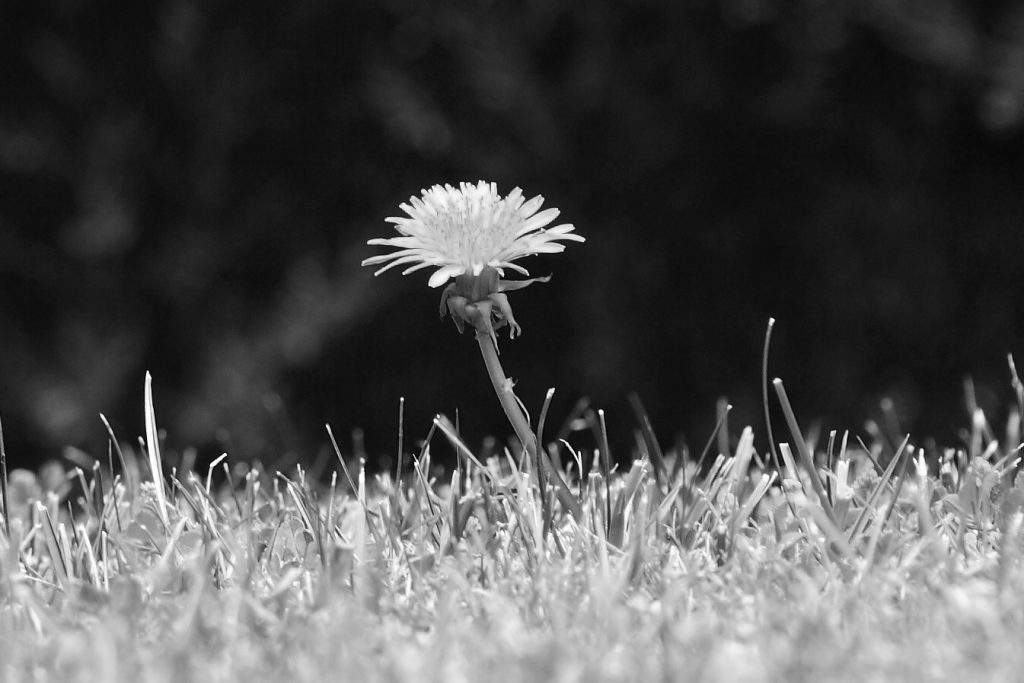
Aperture is the adjustable lens opening that controls the amount of light allowed into the camera.
Refers to the distance between the closest and farthest objects that appear acceptably sharp in a photograph.
Diaphragm is the mechanism in a camera lens that creates a variable aperture. It consists of overlapping blades moving together to create the lens opening.
Focal length is the distance from the center of the lens, when focused on infinity, to the film plane or the area where the film rests behind the shutter curtain.
The area where the film rests in front of the shutter curtain
Prime lens is a fixed-focal-length lens. It could be wide, normal or telephoto
Focus is the process of making the image appear sharp at a certain distance from the camera. You focus by turning the focusing ring on your camera while looking through the viewfinder This can be achieved by either using manual focus or the autofocus system your camera provides.
Depth of Field (DoF) refers to the distance between the closest and farthest objects that appears acceptably sharp in a photograph
f stop is the measurement of the aperture/lens opening
